
Papilio clytia, the common mime, is a swallowtail butterfly found in south and southeast Asia. The butterfly belongs to the subgenus Chilasa, the black-bodied swallowtails. It serves as an excellent example of a Batesian mimic among the Indian butterflies.

The hooded parrot is a species of parrot native to the Northern Territory in Australia. It is found in savannah and open woodland and is one of two extant species in its genus that breed in termite mounds. It has declined from much of its original range.
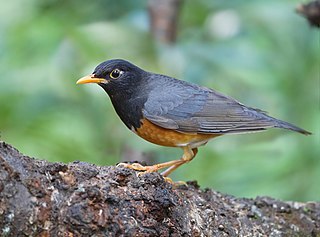
The black-breasted thrush is a species of bird in the family Turdidae. It is found from north-eastern India to northern Vietnam. Although both male and female birds have the same colour on their lower parts, the upper section of males is mostly black in colour, while females are mostly grey-brown. Thus, the bird's common name refers to the colour of the male bird's breast. They tend to live in forests located at high altitude.
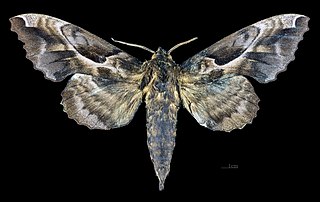
Phyllosphingia is a monotypic moth genus in the family Sphingidae erected by Charles Swinhoe in 1897. Its only species, Phyllosphingia dissimilis, the buff-leaf hawkmoth, was described by Otto Vasilievich Bremer in 1861.
Catocala dissimilis is a moth of the family Erebidae. It is found in Russia, China, Korea and Japan.
The streamline chub is one of the 324 fish species found in Tennessee.
Anastrangalia dissimilis is a species of beetle from family Cerambycidae.
Anastrangalia dissimilis dissimilis is a species of beetle from family Cerambycidae.
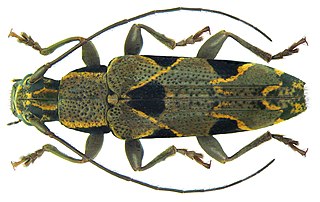
Tmesisternini is a tribe of beetles in the subfamily Lamiinae containing the following genera:
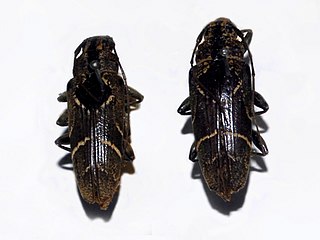
Tmesisternus is a genus of longhorn beetles belonging to the family Cerambycidae, subfamily Lamiinae.
Heteronygmia dissimilis is a species of moth in the subfamily Lymantriinae first described by Per Olof Christopher Aurivillius in 1910. It is native to Africa. The adult moth is on wing from February to November, but is most common between June and September. The larvae feed on the foliage of the East African mahogany and when they are plentiful, they can defoliate the tree.
Tmesisternus agriloides is a species of beetle in the family Cerambycidae. It was described by Francis Polkinghorne Pascoe in 1867.
Tmesisternus brassi is a species of beetle in the family Cerambycidae. It was described by Gressitt in 1984.

Tmesisternus distinctus is a species of beetle in the family Cerambycidae. It was described by Jean Baptiste Boisduval in 1835.
Tmesisternus dubius is a species of beetle in the family Cerambycidae. It was described by Xavier Montrouzier in 1855.
Tmesisternus excellens is a species of beetle in the family Cerambycidae. It was described by Per Olof Christopher Aurivillius. It is known from Papua New Guinea.
Tmesisternus jaspideus is a species of beetle in the family Cerambycidae. It was described by Jean Baptiste Boisduval in 1835.
Tmesisternus schaumii is a species of beetle in the family Cerambycidae. It was described by Francis Polkinghorne Pascoe in 1867. It is known from Moluccas, Australia, and the Solomon Islands.
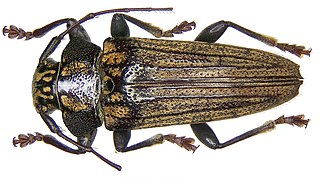
Tmesisternus venatus is a species of beetle in the family Cerambycidae. It was described by James Thomson in 1864.
Euamiana dissimilis is a species of moth in the family Noctuidae. It was first described by William Barnes and James Halliday McDunnough in 1910 and it is found in North America.







